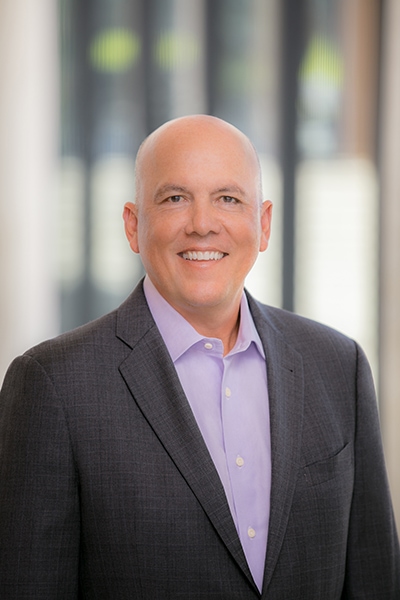ARTICLE SUMMARY:
The Community Blog caught up with Rick Valencia, President of Qualcomm Life, three years after his Q&A interview with MedTech Strategist’s co-editor-in-chief, David Cassak, to find out where we stand with the value-based healthcare evolution, and Qualcomm Life’s initiatives in this important area. In Part 1 of our interview, Valencia talks about the current status of mobile health and wireless connectivity in the device space, what still needs to happen.
Back in the April 2015 issue of MedTech Strategist, we published a comprehensive interview that our co-editor-in-chief, David Cassak, had done with Rick Valencia, SVP of wireless technology leader Qualcomm Inc. and President of the then four-year-old Qualcomm Life subsidiary. At that time, Valencia described how Qualcomm Life was collaborating with the medtech industry via its open, vendor-neutral platforms to help “build the transformational infrastructure to enable the disruptive shift to digital health, and supporting everyone in industry to see this disruption come true.” And, the device industry was showing its willingness to accept digital technology, as it looked for ways of turning devices into more of a solution.
Since that interview published, San Diego, CA-based Qualcomm Life has been busy building one of the world’s largest connected health ecosystems. The company has integrated with 950 different types of medical devices and 50+ major EMRs and intelligent enterprise systems. Qualcomm Life’s 2net™ and Capsule™ Medical Device Information System platforms (the latter acquired through its acquisition of Capsule Technologie in September 2015) are designed to power scalable end-to-end connectivity and integration in the home, in the hospital, and all points in between; enable seamless, near real-time remote care; and help enhance clinical workflows and operational efficiencies in the hospital (the company has over 2,400 hospital customers around the world). About 4.9 million patients globally are remotely monitored using Qualcomm Life systems.

Recently, the Community Blog spoke with Valencia and asked how mobile health and wireless connectivity in the device space – in other words, the evolution of the “Internet of Medical Things” - has evolved since we last spoke with him. He told us that although digital medtech is indeed moving forward and changing healthcare in many ways, and reimbursement from the Centers for Medicare & Medicaid Services (CMS) for remote monitoring of patients is becoming a reality, the latter has been a very slow process and a number of frustrating challenges still remain. Adoption of and reimbursement for remote monitoring, especially for patients with high-cost chronic conditions such as heart failure and diabetes, is a key component in the shift to a value-based healthcare system. In the US, where healthcare expenditures account for nearly 18% of Gross Domestic Product (GDP), value-based care has the potential to significantly reduce overall costs spent on healthcare.
However, healthcare just does not move at the pace of technology evolution, says Valencia. “Early on, we believed that we would move much more rapidly toward a value-based healthcare environment where doctors would be paid for the outcomes that they were generating rather than the volume of services delivered,” he says. “Without finding a mechanism to properly incentivize doctors to more continuously manage their patients, number one they’re not going to do it, and number two, we’re going to continue to have the problem of out-of-control healthcare costs, especially for those who most need continuous monitoring: chronic disease patients.”
Forward Momentum
But, there is good news on the horizon, and Qualcomm Life has built a platform to enable this transition. The company has created a simple-to-use, value-based health-focused platform that connects patients - wherever they are across the care continuum - via medical monitoring and diagnostic devices. It can be compared to a utility, where you just plug in and use it as you need it, says Valencia. Using their platform, data from one or more connected medical devices is captured securely and unobtrusively from patients, then that data is bundled up and presented to a doctor in a way that is meaningful, so that they know what to do (or not do) with their patient.
What will help propel continuous remote patient monitoring capabilities - and the future of digital healthcare - is the next-generation 5G mobile network that Qualcomm is heavily involved in developing, along with other wireless and tech companies. The 5G network is being built to accommodate advanced uses such as healthcare and autonomous vehicles, which require low latency, very high security, and mission-critical applications where you don’t have the flexibility for a network to go down. 5G won’t be fully deployed for about another year, says Valencia.
In the upcoming Part 2 of our interview, we’ll talk with Valencia about Qualcomm Life’s recent partnership with AlertWatch Inc. to provide real-time intelligence to anesthesiologists in the operating room (and those monitoring patients remotely). He also talks about what’s next in the evolution toward value-based care, and his personal passion for the medtech industry.
#QualcommLife #digitalhealth #RickValencia #connectedhealth #internetofmedicalthings #CMS #remotemonitoring #reimbursement #5G #CommunityBlog #MedTechStrategist #medicaldevice #medtech #tracyschaaf
![]() Trial MyStrategist.com and unlock 7-days of exclusive subscriber-only access to the medical device industry's most trusted strategic publications: MedTech Strategist & Market Pathways. For more information on our demographics and current readership click here.
Trial MyStrategist.com and unlock 7-days of exclusive subscriber-only access to the medical device industry's most trusted strategic publications: MedTech Strategist & Market Pathways. For more information on our demographics and current readership click here.
